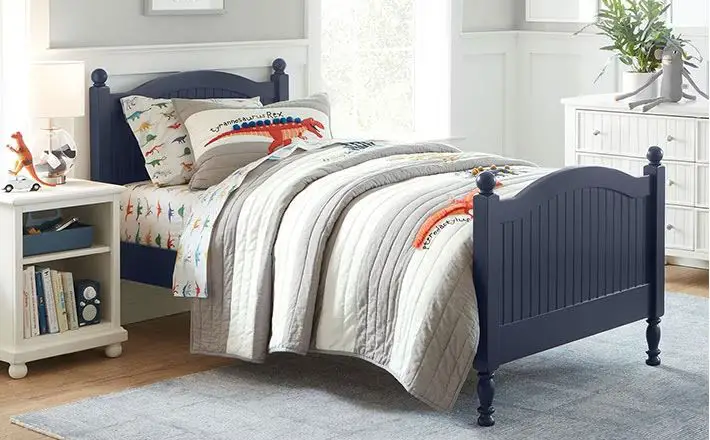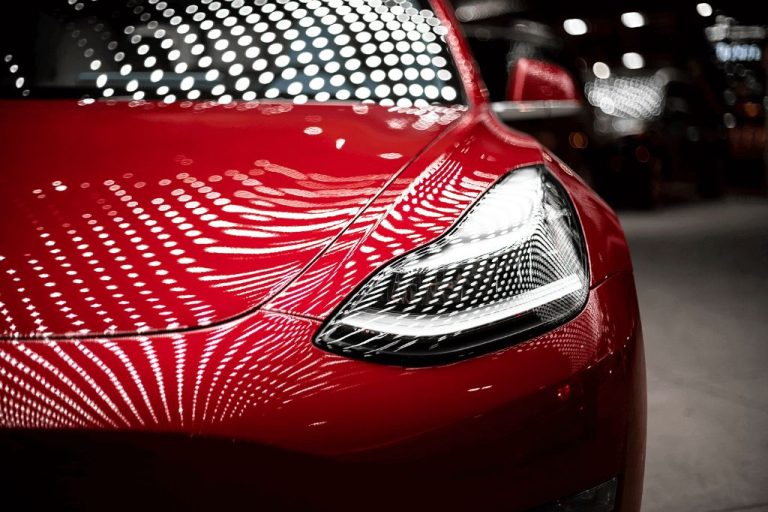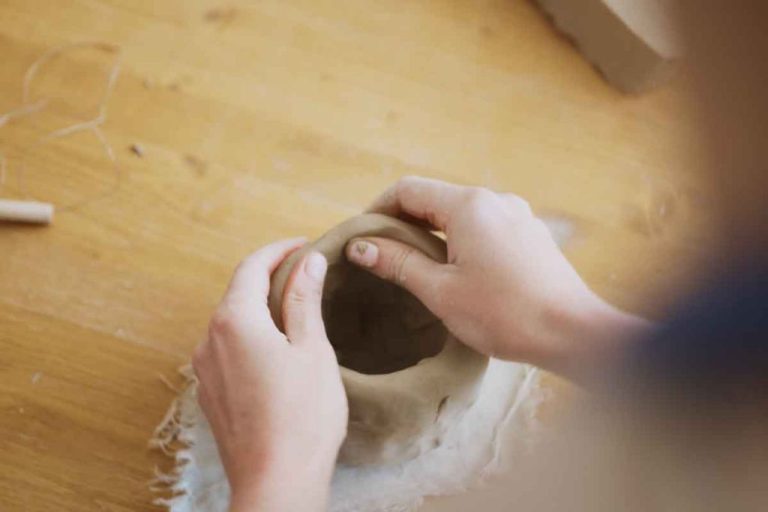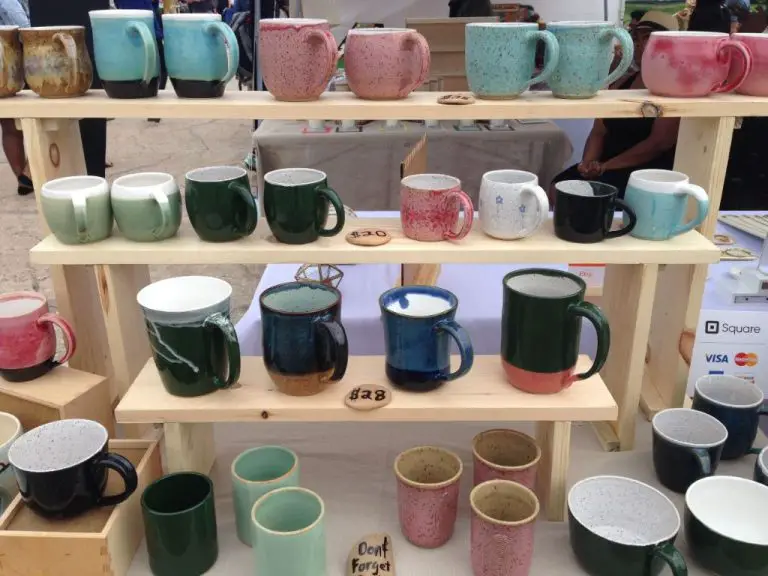Finding Inspiration In Clay: Art Ideas For All Skill Levels
Clay is one of the most versatile and accessible art mediums. Made from natural materials like clay, water, and sometimes additives, clay allows endless creativity. Unlike painting or drawing, clay is a 3D medium that engages our sense of touch and allows us to physically shape artistic visions. The tactile nature of sculpting makes working with clay highly enjoyable and relaxing. Studies have shown numerous mental health benefits of working with clay, including reducing anxiety and negative moods.
Clay as an artistic material has been used for thousands of years and across many cultures. From ancient Greek pottery to modern sculpture, clay allows both novices and experts to tap into their creativity. The forgiving nature of clay makes it a wonderful choice for beginners. Mistakes can simply be kneaded back into the clay and reworked. With some basic skills, even those with no prior experience can craft beautiful items from clay.
This guide will provide an overview of clay art techniques suitable for all skill levels. With some clay, inspiration, and your own creativity, you can discover the many benefits and joys of sculpting with this natural, enjoyable medium.
Clay Art for Beginners
Getting started with clay art can seem intimidating, but it’s easy to dive in with simple beginner projects that allow you to learn fundamental techniques. Focusing on the basics like coil pots, pinch pots, and slab building is a great way to get comfortable working with clay as a novice. These straightforward projects introduce key skills without requiring artistic mastery.
Coil pots are one of the most beginner-friendly clay projects. To make a basic coil pot, roll clay coils then stack them vertically to form the pot’s walls. Pinch the coils together and smooth the inside and outside surfaces. Add a base and shape the rim to complete your pot. Coil building develops skills in rolling uniform coils and bonding clay surfaces.
Pinch pots also rely on a straightforward technique. Begin with a lump of clay and pinch around the edges, rotating as you work. Create a rounded pot shape with an open top and flat base. Pinch pots are fun, organic sculptures that teach you how clay moves under your fingers. The simplicity allows total focus on the sensory experience and primal process of shaping clay.
Slab building introduces working with flat clay sheets. Roll out uniform slabs then cut shapes and join them by smoothing and scoring surfaces. Combine slabs to make boxes, bowls, plaques, and more. Slab construction builds skills in controlling rolling pins and cutters to achieve desired forms.
Simple jewelry like beads and pendants are another way to get started with clay. Roll balls and tubes, cut out shapes, or press into molds. Refine details with carving tools. Fire and finish with glazes, paints, or patinas. Clay jewelry lets you make wearable art and small gifts to share.
Focusing on elemental methods like coils, pinching, slabs, and beads allows beginners to learn clay fundamentals while creating charming projects right away. Mastering basics builds artistic confidence and paves the way for more advanced work.
Source: https://www.skillshare.com/en/blog/simple-things-to-make-with-clay/
Clay Sculpting 101
Sculpting with clay allows artists to create stunning three-dimensional works of art. For beginners interested in learning the fundamentals of sculpting figures, busts, animals, and more, there are some key tools and techniques to learn.
When starting out, choose an oil or polymer based clay that will stay workable without drying out too quickly. Some popular beginner clays include Sculpey and Super Sculpey. Gather basic sculpting tools like loop tools, rubber tipped sculpting tools, and wooden modeling sticks. Reference photos are extremely helpful when sculpting realistically. Lightly sketch the basic forms onto the clay before sculpting details. Use clay modeling tools to push, pull, blend and scrape the clay into shape.
Focus on developing major forms and proportions first before adding fine details. Building up the sculpture gradually in layers often produces better results than trying to sculpt details all at once. Be patient and willing to rework areas multiple times to achieve a lifelike, accurate sculpture. Pay special attention to capturing unique facial features and expressions when sculpting busts and figures. Refine shapes and add texture with loop, fan, and needle tools.
Allow time for pieces to firm up slightly before detailing. Bake polymer clay sculptures according to package directions. For large sculptures, insert armatures before baking so they maintain their shape. With practice and persistence, beginners can steadily gain skills in sculpting remarkably realistic clay figures, animals, busts and more. For helpful video tutorials, visit “How to Sculpt with Clay for Beginners Step by Step” on YouTube.
Making Functional Ceramics
Creating functional pottery like mugs, bowls, and plates is a satisfying way to get started with clay. There are endless possibilities for making functional pieces that are both beautiful and useful. When making functional ceramics, it’s important to think about form and function – will your mug be comfortable to hold and drink from? Will your bowl nestle foods in just the right way?
Beginners can start with simple handbuilt projects like pinch pots and coil pots. These techniques allow you to shape clay into vessels by pinching it or coiling ropes of clay. With practice, you can create gorgeous one-of-a-kind mugs, bowls, vases, and more. Consult resources like this Pinterest board for functional ceramic ideas.
When your piece is leather hard, you can add decorative elements like carving, incising designs, or attaching additional clay pieces. The next step is applying glaze, which gives pottery its color and shiny finish. Always use glazes approved for the clay type and firing temperature you plan to use. Firing pottery in a kiln brings the clay to its fully vitrified and usable state. With some clay, glaze, and a way to fire it, you can create an endless array of functional ceramics for your home.
Clay Crafts
Clay is a fun, versatile material that can be used to make all kinds of crafts and decorative objects. From magnets to ornaments to figurines, clay crafts are an enjoyable way to express creativity. Here are some fun clay craft ideas to try:
Make customized magnets out of polymer clay by shaping the clay into different designs like animals or food items. Add color and textures, then bake according to package directions. These durable magnets make great gifts or can be used to decorate your refrigerator.
Create unique Christmas ornaments out of clay by rolling balls or cutting shapes, then decorating them with acrylic paint, glitter, and other embellishments. Use a straw to make a hole before baking so you can thread ribbon through to hang them on your tree. Fun shapes like snowmen, Santa hats, and gingerbread men make festive ornaments.
Sculpt miniature clay figurines like people, animals, or fantasy creatures. Polymer clay like Sculpey holds fine detail well. Use toothpicks to add texture and attach small props. Bake figures on a baking sheet then display them around your home or office.
For more clay craft inspirations, check out this guide from Pinterest. With just a little creativity, clay can be transformed into endless DIY projects for both kids and adults.
Clay Art for Kids
Clay is a wonderful artistic medium for children of all ages. Working with clay provides a range of benefits for a child’s development. Molding and sculpting clay improves fine motor skills, hand-eye coordination, and spatial reasoning. The tactile experience helps children learn about textures and shapes. Clay art also encourages creativity, self-expression, and problem solving as kids figure out how to bring their ideas to life.
There are many child-friendly clay projects perfect for preschoolers and elementary students. Simple pinch pots, coil bowls, and clay imprint art are easy ways for young kids to get started with clay. As children get older, they can create more elaborate clay sculptures of animals, fictional characters, vehicles, and more. Clay is also a forgiving medium that allows kids to practice sculpting figures and shapes over and over again.
Air-dry clay is a good choice for classroom art or home projects. It doesn’t require baking and allows kids to complete a clay piece in one sitting. Modeling clay that doesn’t harden can also be reused for multiple projects. Natural clay that requires firing in a kiln provides a more authentic clay experience for older kids. With adult supervision, clay is an engaging and enriching art material that fuels a child’s creativity and imagination.
Some fun clay projects for kids include:
– Clay pinch pots or coil pots decorated with beads, seeds, and paint
– Imprint clay art using natural materials like leaves, seashells, or feathers
– Clay animals inspired by a zoo or farm visit
– Miniature clay food items for a pretend bakery or restaurant
– Clay beads, jewelry, and other small accessories
– Clay magnets shaped as letters, numbers or animals
With the right clay materials and a little guidance, clay art projects can provide endless creativity and learning. Children gain confidence, focus, and satisfaction as they mold simple lumps of clay into treasured works of art.
(Source)
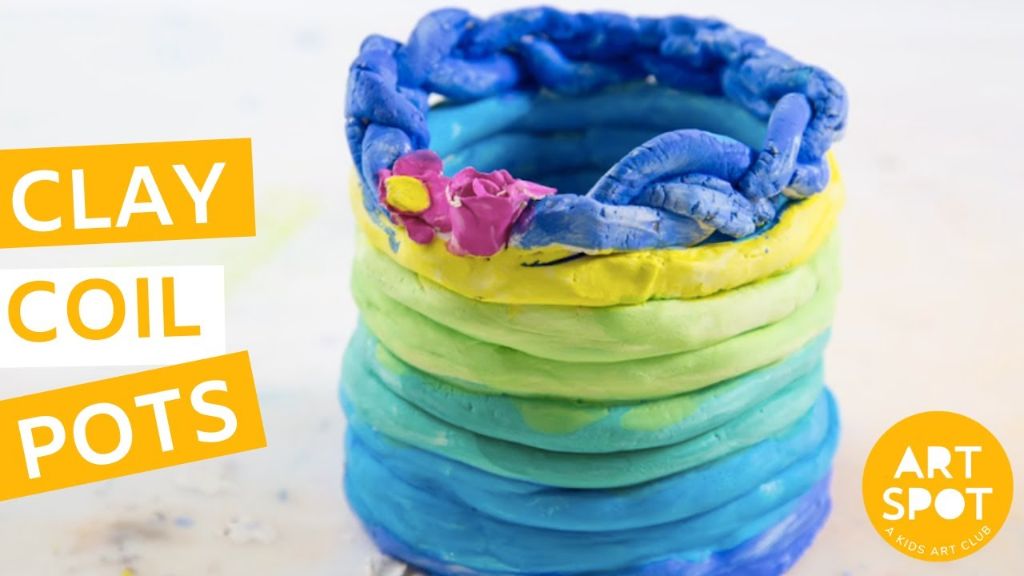
Nature-Inspired Clay Art
Nature can provide endless inspiration for clay art projects. Leaf patterns, animal shapes, landscapes, and natural textures are just some of the many ways to incorporate elements from the natural world into your clay creations.
Leaf impressions make for beautiful decorative clay tiles. Press actual leaves into soft clay slab tiles before firing to preserve their shape and veins. You can either leave the impressed leaf cavities empty, or fill them with colored slips or glazes for extra visual interest. Experiment with leaves of all shapes and sizes to create your own natural designs (Chris Colle, 2023).
Sculpt animals, birds, fish, and insects out of clay for whimsical nature-themed works. Pay attention to unique details like feathers, fur, scales, and antennae to capture their character. Add painted details after firing or incorporate natural items like stones, twigs or seeds. Let nature inspire your imagination. Display your clay creatures in a habitat style scene for added realism.
Capture landscapes and vistas in clay by sculpting rolling hills, mountains, forests, and bodies of water. Create depth and levels to portray distance. Add clay trees, rocks, trails, and other scenic elements. Firing your landscape and adding a wash of colored glazes can further enhance the scene. Reference photos of places that inspire you to recreate the view in clay (Warren Moyer, 2019).
Imprint clay with actual natural textures like bark, feathers, sticks, stones, flower petals, pinecones, or seashells. Press the objects firmly into soft clay to pick up their distinctive detailing. Remove the materials after imprinting to reveal their patterns and shapes. Enhance the textures with paints and glazes or leave as is for a natural earthenware look.
Abstract and Modern Clay Art
Abstract and modern clay art allow for tremendous creativity and experimentation. By moving beyond representational forms, abstract sculpture opens up possibilities for intriguing shapes, textures, and compositions. Here are some tips for creating compelling abstract and modern artworks in clay:
Focus on expressing emotions or ideas non-literally. Let go of aiming to mimic real-life objects and instead try to convey a feeling, mood, or concept. For example, you could sculpt swirling organic shapes to depict energy or jagged forms to convey tension.
Incorporate unusual shapes and combinations. Go beyond basic geometrical shapes to explore asymmetrical, free-flowing, or gravity-defying forms. Cluster diverse shapes together in surprising yet balanced arrangements.
Pay attention to negative space. The spaces between clay elements are just as important for overall composition as the clay itself. Consider how to use voids and gaps to create interest.
Experiment with textures. Roll out slabs of clay and carve patterns into them using mark-making tools. Add visual richness by juxtaposing smooth and rough patches. Press items into clay to leave imprints and indentations.
Use vibrant, modern colors. Abstract sculpture lends itself well to bold, contemporary color palettes. Stain liquid clay or acrylic paints can help you achieve bright, saturated hues.
Incorporate mixed media. Combine clay with materials like wood, metal, glass, or found objects. Allow non-clay elements to emerge seamlessly out of the clay sculpture.
Mount artworks on the wall. Hang abstract clay wall sculptures using hardware or other creative display methods. Gravity-defying or asymmetrical compositions gain added dimension when mounted vertically.
Abstract clay art offers broad creative possibilities. By letting go of literal representations, you can craft artworks that fascinate through imaginative use of shape, form, texture, and color.
Troubleshooting Common Clay Issues
Clay art can be fickle at times. Cracks, breaks, and other issues can arise during the sculpting, drying, firing, and storage process. Thankfully, most common clay problems have simple solutions.
One of the most frequent issues is cracking and breakage. This can occur when clay dries too quickly or unevenly. To prevent cracking, store clay in a sealed container or plastic bag to slow moisture loss. Wrap works in progress in plastic wrap or damp cloths when not working on them. Make sure clay dries slowly and evenly before firing.
Clay can also crack or break during firing. Rapid temperature changes can create stresses. Always follow the recommended firing schedule and ramp up/down temperatures gradually. Allow sufficient soak time at peak temperature. Cracking can also occur from under-firing, so make sure clay reaches the minimum firing temperature.
Proper clay storage is key to preventing many issues. Never allow clay to freeze, as this causes irreversible damage. Store clay in a cool, dark place, ideally around 60-70°F. Seal containers airtight. Monitor clay moisture and rehydrate if needed. Throw out clay if you notice mold, foul odors, or color changes.
With care and patience, you can troubleshoot most common clay problems. Proper preparation, storage, drying, and firing will help clay art creations hold together.
Inspiring Examples of Clay Art
Clay art has been around for thousands of years, with pottery and sculpture crafted by ancient civilizations like the Greeks, Romans, Chinese, and Mayans. Over the centuries, clay has continued to inspire artists who shape it into stunning works of art.
Here are some inspiring examples of renowned clay artists showcasing different styles and approaches:
British ceramicist Edmund de Waal creates minimalist porcelain vessels and installations. His delicate white porcelain pots range from circular forms to angular faceted pieces, often arranged in groupings. De Waal finds inspiration in Japanese aesthetics and the Bauhaus movement. See his work at https://www.edmunddewaal.com/.
Japanese-American artist Shio Kusaka crafts organic sculptural vessels that reference natural shapes like sea creatures, plants, and rock formations. She builds up the rippling, biomorphic ceramic forms using coils of clay in a technique inspired by her cultural heritage. View her nature-based artwork at https://www.shiokusaka.com/.
Known for his colorful narrative pottery, British ceramicist Grayson Perry decorates classical vase shapes with complex figurative scenes that provide witty social commentary. His pots feature intricate drawings of people, animals, patterns, and text rendered in bright glazes. See his vivid pottery at https://victoria-miro.com/artists/20-grayson-perry/.
Abstract organic sculptor Magdalene Odundo handbuilds and sculpts one-of-a-kind pieces inspired by nature, vessels, and the human form. The Kenyan-British artist uses coiling techniques to create sensuous, curved shapes resembling gourds, flowers, shells, and the female body. View her signature organic works at https://www.odundo.com/.


